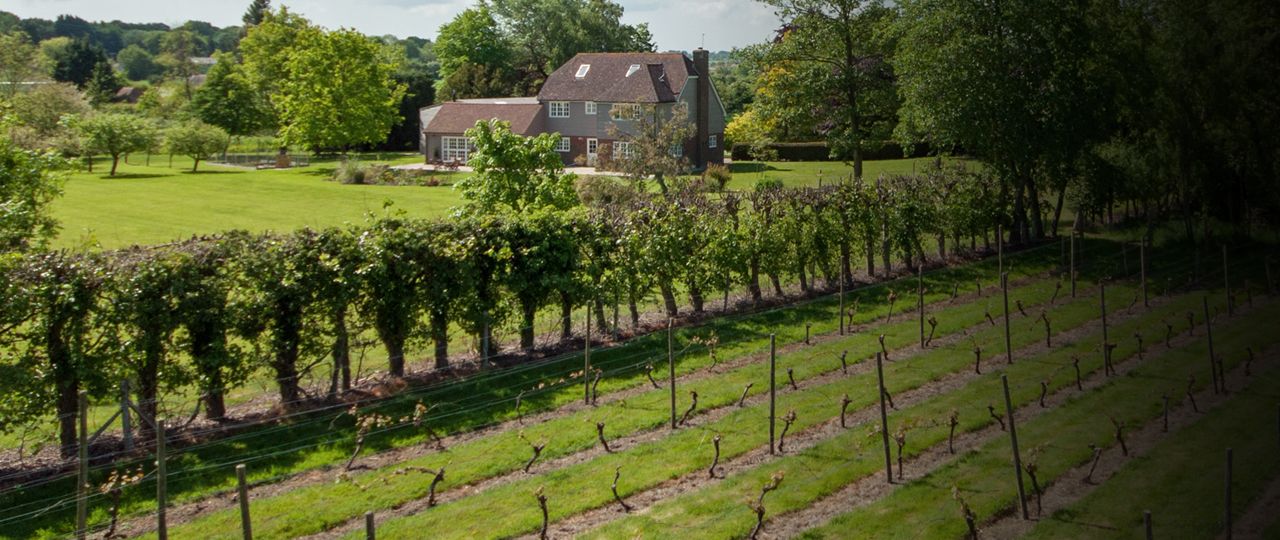
Nick Watson
Head of Viticulture


Head of Viticulture
The days when the words ‘English’ and ‘wine’ were rarely seen together are history. The UK wine industry has been growing steadily over the past decade, with land planted with vineyards increasing by 140% and production now at an impressive average of 3.77 million bottles a year. The wine in these bottles starts its life at one of the 470 commercial vineyards in England, Wales and the Channel Islands, and is fermented at one of 135 wineries.
Sparkling wine now accounts for 66% of English wine, rapidly moving up from a 50/50 split with still wine in 2010. The growth is down to a cocktail of factors, including changing weather patterns, judicious planting in areas with the right soil and topography, increasing knowledge and professionalism in the production process, and a growing following among the press and public.
Chief among these is the climate factor, which the mild climate in the southeastern corner of the country makes for good conditions. With the first frosts coming later in the year and dissipating earlier in the spring, there is a longer growing period with more autumn sunshine.
There is no better endorsement of this than the announcement last December that leading champagne house Taittinger has bought land in Kent to plant vineyards, making it the first champagne house ever to invest in the UK. It aims to produce an English sparkling wine ‘of real excellence... and not to compare it with champagne or any other sparkling wine’, in the words of the company’s President, Pierre-Emmanuel Taittinger.
With its UK partner, wine company Hatch Mansfield, Taittinger bought the 69 hectares (171 acres) of Stone Stile Farm at Chilham, near Canterbury, through Strutt & Parker. It was the culmination of a lengthy search as the land had to be accessible from France, with the right soil type and south-facing slopes, and no more than 80 metres above sea level, in order to provide the best growing and ripening conditions. Needless to say, there were many soil tests.
Take it from one of the country’s largest wine estates, Nytember, headed up by Chief Executive Eric Heerema. He states that there is a long way to go before we see full international acceptance of English sparkling wine, saying “that it will take time, further professionalism and marketing. The main challenges for the development of the industry and the costs and high risks.You need a real passion for growing grapes, and the financial strength and perseverance to be in it for the long run.”
This passion for growing grapes can be seen in the Roberts family, owners of Ridgeview vineyards and winery in Ditchling, East Sussex where their love for English wine has won them a number of awards. CEO Tamara Roberts says “We’re building up our exports, but our biggest market is here in the southeast of England. People are much more focused on where their food and drink comes from these days; visitors like to come for tastings and then leave with a case of wine.”
Vineyards are labour-intensive, requiring a large initial investment and a high degree of expertise. Vines are usually planted by specialist contractors and need to be securely fenced and trellised. Vine management also requires specialised viticulture tractors and equipment.
Even the most knowledgeable farmers tend to take on a wine consultant, and a vineyard worker may also be employed. But some of this investment can be reduced by using a contract winemaker.
Vineyards are also expensive to operate with some owners estimating it costs more than £100,000 a hectare for the first three years before you see a single harvestable grape.
The commercial life of a vine is 25-30 years, after which its productivity will drop away. It is generally agreed that quality and quantity improve as vines mature, but good wines can be made from young vines if conditions are ideal which then puts you into the winemaking itself, which has a further set of costs and decisions.
Although winemaking is not an easy or cheap option, landowners should not be discouraged- you need passion and to be in it for the long haul but if you get it right, the results can be fantastic – the success of English wine is testament to this.
English wine styles produced
Total hectares of vines planted
Five-year average annual production in bottles
Annual production in bottles
Number of vineyards in England